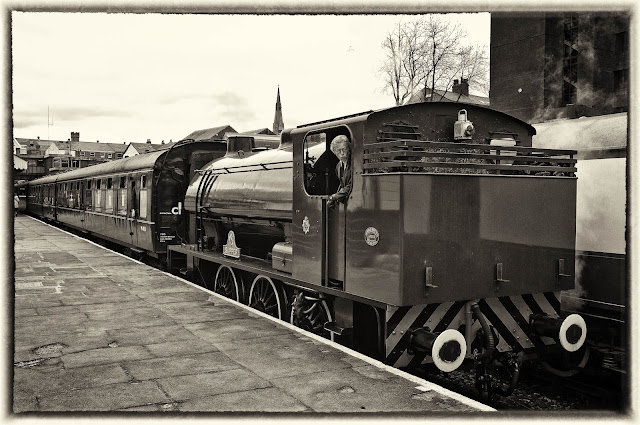 |
| Statue in memory of Robert Peel in front of the Parish Church, Bury |
So, with a desire to look again at what was once quite a pleasant town I took the train into Manchester and then the tram from Manchester's Victoria station into Bury. The train pretty well took the same route as the train took when I was much younger. A few of the stations have changed from the days of the old electric trains, and there seemed rather more rubbish and waste scattered around the area. Similar to how I remember the area, but rather more different than I was expecting.
On arrival at Bury it seemed less welcoming than I could recall. Kay Gardens is a shadow of its former glory and the area just seemed somewhat dirty and run down. I headed off towards the Parish Church as I wanted to see the barracks and the statue of Sir Robert Peel.
 |
| Sir Robert Peel. |
Subsequent to Robert Peel's sudden death a public meeting in Bury's court house determined that a monument be erected as a perpetual memorial to the town's eminent townsman.
A Bury local told me that the sculptor of the bronze statue, Edward Hodges Baily, committed suicide when he noticed the mistake in his statue. Take a look at the image of Sir Robert Peel and see if you can see the mistake. I'll tell you what the mistake is at the end of this post. Not sure the story of suicide is correct, bit the mistake is definitely there.
Close by the statue of Sir Robert Peel and the Parish Church you'll find the barracks. This building is quite impressive and probably not noticed by many of Bury's visitors being hidden away behind the main streets. The third shot in this post is a four shot panorama stitched together which may explain the slight distortion in the building, but at least it gives you an impression of the building.
 |
| The barracks at Bury. |
Thought I'd forgotten to tell you the sculptor's mistake? Not a chance. The mistake is with Sir Robert Peel's waistcoat. Men's clothes wrap left over right, ladies go right over left. Look carefully at the image and you'll notice that Sir Robert's waistcoat is buttoned in a ladies style rather than a man's.






I'm very glad you're having such a good time, Chris! I like these black and white shots!
ReplyDelete